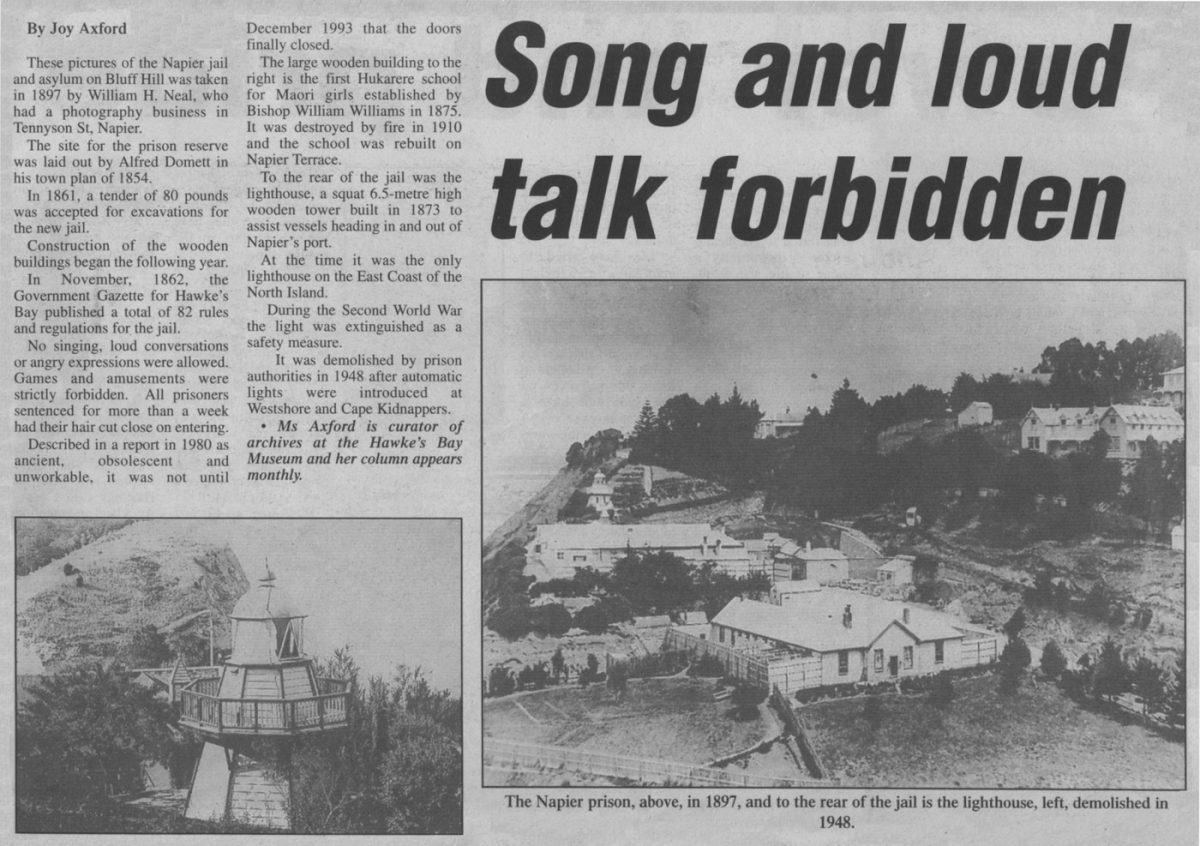Song and loud talk forbidden
By Joy Axford
These pictures of the Napier jail and asylum on Bluff Hill was [were] taken in 1897 by William H. Neal, who had a photography business in Tennyson St, Napier.
The site for the prison reserve was laid out by Alfred Domett in his town plan of 1854.
In 1861, a tender of 80 pounds was accepted for excavations for the new jail.
Construction of the wooden buildings began the following year.
In November, 1862, the Government Gazette for Hawke’s Bay published a total of 82 rules and regulations for the jail.
No singing, loud conversations or angry expressions were allowed. Games and amusements were strictly forbidden. All prisoners sentenced for more than a week had their hair cut close on entering.
Described in a report in 1980 as ancient, obsolescent and unworkable, it was not until December 1993 that the doors finally closed.
The large wooden building to the right is the first Hukarere school for Maori girls established by Bishop William Williams in 1875. It was destroyed by fire in 1910 and the school was rebuilt on Napier Terrace.
To the rear of the jail was the lighthouse, a squat 6.5-metre high wooden tower built in 1873 to assist vessels heading in and out of Napier’s port.
At the time it was the only lighthouse on the East Coast of the North Island.
During the Second World War the light was extinguished as a safety measure.
It was demolished by prison authorities in 1948 after automatic lights were introduced at Westshore and Cape Kidnappers.
Ms Axford is curator of archives at the Hawke’s Bay Museum and her column appears monthly.
Photo caption – The Napier prison, above, in 1897, and to the rear of the jail is the lighthouse, left, demolished in 1948.












Do you know something about this record?
Please note we cannot verify the accuracy of any information posted by the community.